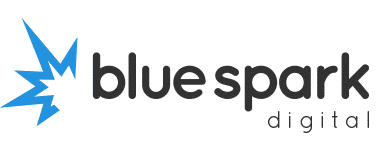How to Update Your WordPress Website Without Breaking It
Your website’s live. It looks great. But now you want to change something – update a phone number, add a new service, or swap out a photo.
You log in, poke around… and suddenly you’re not so sure.
“What happens if I break something?”
“Where do I even start?”
“Will I ruin my SEO?”
I get it. For small business owners around Hampshire and Surrey, updating your own website can feel a bit like defusing a bomb – especially if it’s your first time inside WordPress.
So here’s a friendly, plain-English guide to updating your site safely – without messing it up.
First Things First: Know What Kind of Update You’re Making
There are two types of updates:
- Content Updates
These are things like:
- Changing text
- Adding new blog posts
- Swapping images
- Updating contact details
These are usually safe to do yourself – especially if your site was built properly (which mine always are).
- Technical Updates
These include:
- Updating WordPress core
- Updating themes or plugins
- Installing new plugins
- Changing page layouts or menus
These can be riskier if you’re not sure what you’re doing. Always back up before touching anything technical.
Let’s start with the safe stuff…
How to Make Content Updates Safely
Step 1: Log In
Head to:
yourdomain.co.uk/wp-admin
Enter your username and password. If you’ve forgotten them, use the “Lost your password?” link.
Step 2: Find the Right Page or Post
In the left-hand menu, click: Pages – for your main content pages
Posts – for blog articles
Click the one you want to edit.
Step 3: Use the Block Editor (Gutenberg)
Most WordPress sites now use the Block Editor, which lets you add and edit sections of content one at a time.
Each block could be a:
- Paragraph
- Image
- Heading
- Button
- Video
Just click on the bit you want to change and type. It’s a lot like using Word or Google Docs.
Step 4: Use “Preview” Before You Hit Update
Always click Preview first to make sure it looks how you expect. If you’re happy, click Update to make it live.
Step 5: Check the Front End
Visit the page as a normal visitor to make sure everything is displaying properly. If not, don’t panic – just go back in and tweak it.
How to Add a New Page (The Safe Way)
Want to create a new page (e.g. “Meet the Team” or “New Service”)? Here’s how:
- Go to Pages > Add New
- Give it a title
- Add your content using blocks
- Set a featured image if needed
- Click Preview and then Publish when you’re ready
You may also need to add the new page to your menu. That’s under: Appearance > Menus
What NOT to Touch (Unless You Know What You’re Doing)
If you’re not confident, avoid messing with:
- Theme files
- Plugin settings you don’t understand
- Custom code
- Anything marked “PHP”
- The “Theme Editor” or “Plugin Editor” under Appearance
One wrong keystroke in the wrong place can take your whole site offline.
How to Back Up Before Technical Updates
If you do want to update plugins or WordPress core, always back up first.
You can do this using:
- UpdraftPlus (popular and free)
- Your hosting control panel (many hosts offer 1-click backups)
- Or ask your developer (me!) to set this up as part of a care plan
Once backed up, go to: Dashboard > Updates
There you’ll see what needs updating. Tackle them one at a time, starting with plugins.
Tip:
If the site goes blank after an update, don’t panic – it’s usually fixable. A quick restore from backup will get you back online.
What About SEO? Will I Mess It Up?
If you’re just changing text or images, and not removing pages or headings, you’re unlikely to hurt your SEO.
That said, here are a few tips:
- Don’t delete pages without creating redirects
- Keep headings structured properly (only one H1 per page, followed by H2s and H3s)
- Add alt text to images for accessibility and Google image search
- Use relevant keywords naturally – no need to stuff them in
If you’re not sure, I can always do a quick SEO check after your edits.
Want More Freedom (and Less Worry)?
The key to feeling confident editing your site is knowing it was built properly in the first place.
That’s why I build WordPress sites using flexible content blocks and layouts tailored to you. That way, you can update text, swap images and add sections without ever touching code.
No stress. No mess. Just a website you can actually use.
What You Can Do Next
If you’re worried about breaking your site – or you’ve tried before and something went wrong – I’m happy to help.
I can:
- Show you how to make updates safely
- Fix anything that’s gone wrong
- Set up backups and restore points
- Or take care of all changes for you
Whether you’re a DIYer who wants more control or someone who’d rather never log in again, I’ll support you in a way that works for you.

